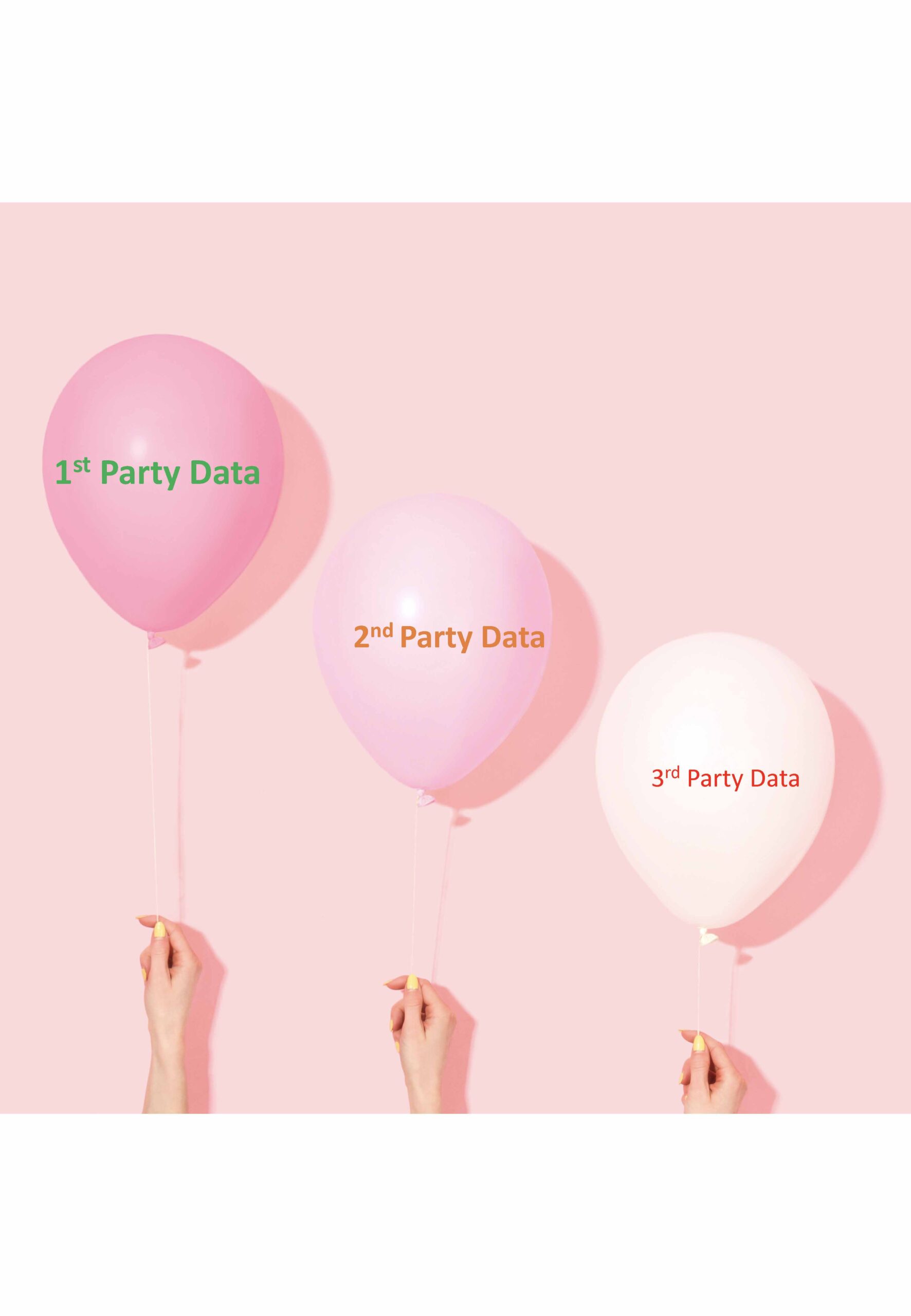The pixel space is awash with parties of data…who’s on first, what’s on second and third is no-where to be seen (soon).
The data party is becoming more private and exclusive and less free-for-all. So, who is invited to the data party?
First party data are the VIP’s and on the A-list!
- First party data is data collected with direct contact and consent from a brand’s customers. It is known and identifiable by name, demographics, buying behaviour and other behavioural data points.
- There is a clear and transparent data exchange between customers and brands and often come from websites, apps, crm systems, point of sale systems, accounting systems and an unbiased (not really) personal favourite – loyalty programs.
- Loyalty programs are the VIP’s at the 1st Data’s party (again, no bias from me on this – hell no!).
- Programs of all shapes and sizes are a (not the only) go-to strategy to gain, own and with sensitivity and respect, utilise identifiable and consented customer data to create a mutually beneficial exchange between the brand and its members.
- There are many cases, commentaries and articles on loyalty programs – the good, the bad and the brilliant and this article is not about to go through all of those again. I wrote an in-depth review of programs in the ‘Do you really need a loyalty program?’ article here.
- For pure-play ecommerce brands, their first party data is the identifiable customer who transacts with the brand – there is a value exchange. Consent is still required for ongoing interaction.
- For manufacturers who want a direct-to-consumer relationship, there needs to be some deeper thinking and planning for a first-party data value exchange over the longer term with their end customer.
- The benefits are clear as Levi’s CEO Chip Bergh stated in a recent interview, “When I joined the company 10 years ago, our total direct to consumer business was 21 percent. Last year, we finished the year at almost 40 percent, and our ambition is to get above 50 percent in the coming few years. DTC is important to us because we’re able to have that direct connection with the consumer — there’s no middleman.”
- Here’s an article for further insights - Brands selling through a reseller channel – do you really know your end customer?
- For retailers with both ecommerce and physical stores, the first party data challenge is about connection of a unique customer to where-ever they shop.
It’s simple.
First party data is a foundational asset of business growth when collected and used with relevance and respect.
Oh, and back to loyalty programs (sorry cannot help myself) there’s a little more on ‘data collection and use’ further down in this article, highlighting what members consider when providing their data to loyalty programs.
Let’s get back to the party (data).
Second party data sources are not the VIP’s at the data party, however are next in-line to be invited in (B-list or as I call it Borrowed List)
- They know someone who knows someone. It’s borrowed data, maybe rented (think rent-a-crowd).
- Second party data is someone else’s first party data (data collected with consent from their customers).
- While the data relationship between a brand and 2nd party data is not direct and as close as 1st party data, there is still an opportunity connect with this data through partnerships and data sharing (where privacy principles prevail and consent is clear).
- Loyalty programs often provide partners and suppliers access to their member base for insights or communications and for these partners and suppliers this is 2nd party data.
Finally, third party data is no longer part of the cool data party crowd and are off the invitee list.
- Data collected from disparate and aggregated sources with no direct relationship with data source (person). Data from cookies are the most commonly discussed issue at the moment. Have a read of this article demise of third-party cookies
- Third-party data will have little or no more access to data parties and retirement from the data party scene is imminent. It’s time to leave the data partying to your 1st and 2nd cousins”.
There are some more interesting insights on this topic in the CMO article - The third-party data party is over. What comes next for marketers?
The focus for brands is clear and present.
Focus on 1st party data to own, manage and control.
Borrow from 2nd party data if you need to augment 1st party data or if you have no 1st party data.
Let 3rd party rest or limit reliance.
The final word on the whole data party scene is to never forget that due respect and consent must be gained from customers.
With this in mind, here are some insights from our recent For Love or Money™ 2021 report, where we researched what members consider when providing their data to loyalty programs (yes I know they are not the only source of 1st party data, however the insights are still relevant):
The top three considerations in 2021 and 2019 were
- Knowing how secure the data is
- Knowing how the data is used
- The reputation of the company asking for the data
With data party becoming more private and exclusive it makes sense to get your 1st party data strategy clear for long-term growth and sustainability.
Data responsibly.


